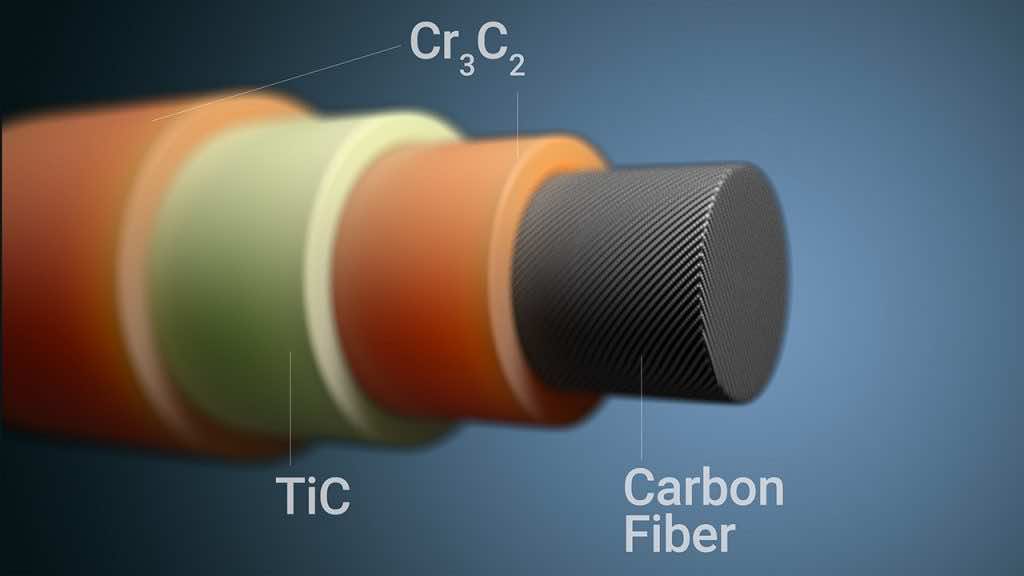Carbon fiber had increasingly and quite swiftly replaced steel when it came to building the structures of cars, aircraft, and other sports equipment. It was observed and discovered that carbon fiber is stronger, lighter in weight, and stiffer than regular steel. Hence, it was preferred to other materials. However, there is one shortcoming that was proving to be a hindrance for the researchers. The tendency of carbon fiber to heat up at high temperatures and eventually burn obstructed its operations in various ways. Now, scientists and researchers have discovered a way to avoid this, and this material is proclaimed close to perfect for the industry.
The way discovered is the coating formed by molten salt over the fiber. The carbon fiber can withstand high temperatures of up to 800 degrees Celsius. Apart from bicycles and sports equipment, it is also used in making guitars. However, when the temperature becomes extreme and intense, the fiber begins to decompose and lose the traits that had made it desirable in the first place. This usually happens in aircraft when the fiber comes in contact with oxygen at high temperatures.
The research was done by the team from the University of Nebraska–Lincoln and France’s Institute of Condensed Matter Chemistry of Bordeaux. The leader of this team was the University of Nebraska–Lincoln and France’s Institute of Condensed Matter Chemistry of Bordeaux.
The solution proposed is not very expensive and is an easily scalable one. The reaction occurs at 982 degrees Celsius and that is when the salt crystals are liquified. Then chromium and titanium powders are added. All these chemicals create a three-layered protective coating on the fiber.
Experiments were carried out at even 1200 degrees Celsius and with an oxyacetylene torch. The layers were intact at the end of each experiment carried out. Work is being done on the flammability of the coating and once it is done, it will open new avenues for carbon fiber application. The research is published in Proceedings of the National Academy of Sciences.

